Auctions
Beyond Leonardo: 11 Crucial Takeaways From Last Week’s $2.3 Billion New York Mega-Auctions
From the best bargain to the biggest loser, here are our parting observations from last week's auction marathon.
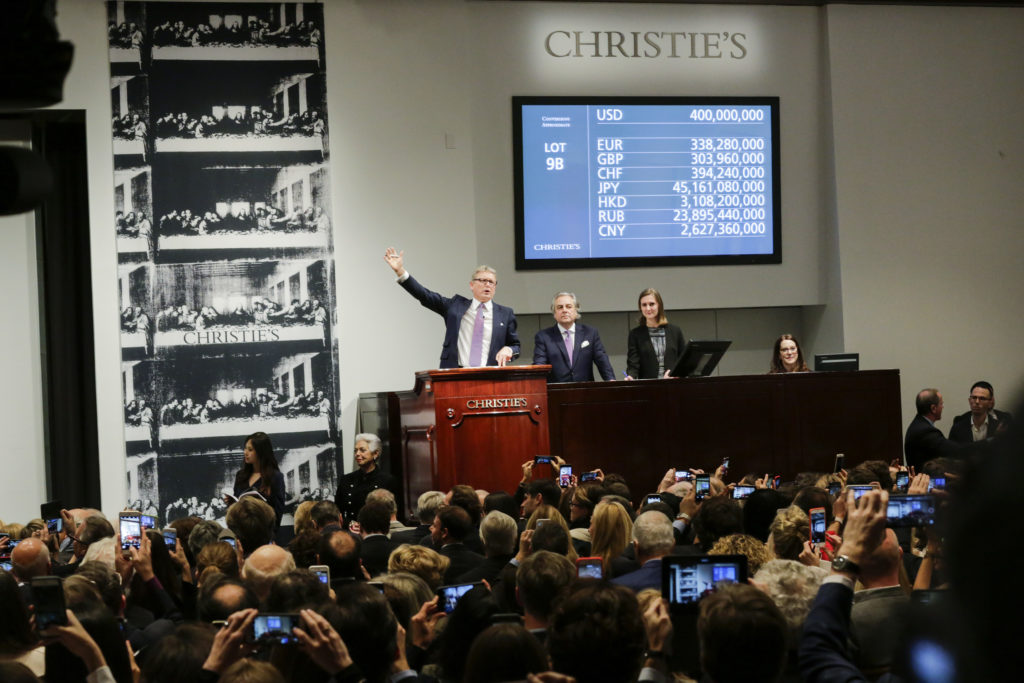
From the best bargain to the biggest loser, here are our parting observations from last week's auction marathon.

Artnet News

An astonishing $2.3 billion worth of art was bought and sold at auction in New York last week. Christie’s, Sotheby’s, and Phillips stuffed 11 sales of Impressionist, Modern, and contemporary art into five very busy days. The combined haul across all three houses was nearly double that of the equivalent sales in November 2016, which made $1.18 billion.
And while one painting, in particular, stole most of the headlines, there’s more to consider beyond the biggest-ticket lots. What should market-watchers take away from the onslaught? Here are our parting observations.

The green stands for money. (Timothy A. Clary/AFP/Getty Images)
Christie’s sold a whopping $1.42 billion worth of art last week, besting rival Sotheby’s by nearly $700 million. The publicly traded auction house made a total of $724 million across its four sales, while Phillips—which held only two—trailed in third place with $134.6 million. All told, the houses made a combined total of $2.3 billion during the so-called auction “giga-week,” one of the highest aggregate results ever. The market has not seen such lofty totals since the spring 2015 season when the sales made a record $2.7 billion.

Pierre-Auguste Renoir’s Baigneuse (assise). Image courtesy of Sotheby’s.
Much attention is paid to the dizzying gains made by consignors, but don’t forget: You can also take a serious hit. One big loser last week was Pierre-Auguste Renoir’s Baigneuse (assise) (ca. 1882), which sold at Sotheby’s Impressionist and Modern sale for $1.7 million, some 15 percent short of its $2 million low estimate. The work previously sold at Christie’s New York in 1999 for $2.86 million, or $1.16 million more than it sold for last week. Accounting for inflation, that price is equivalent to $4.19 million in 2017 dollars—making the loss sting even more.
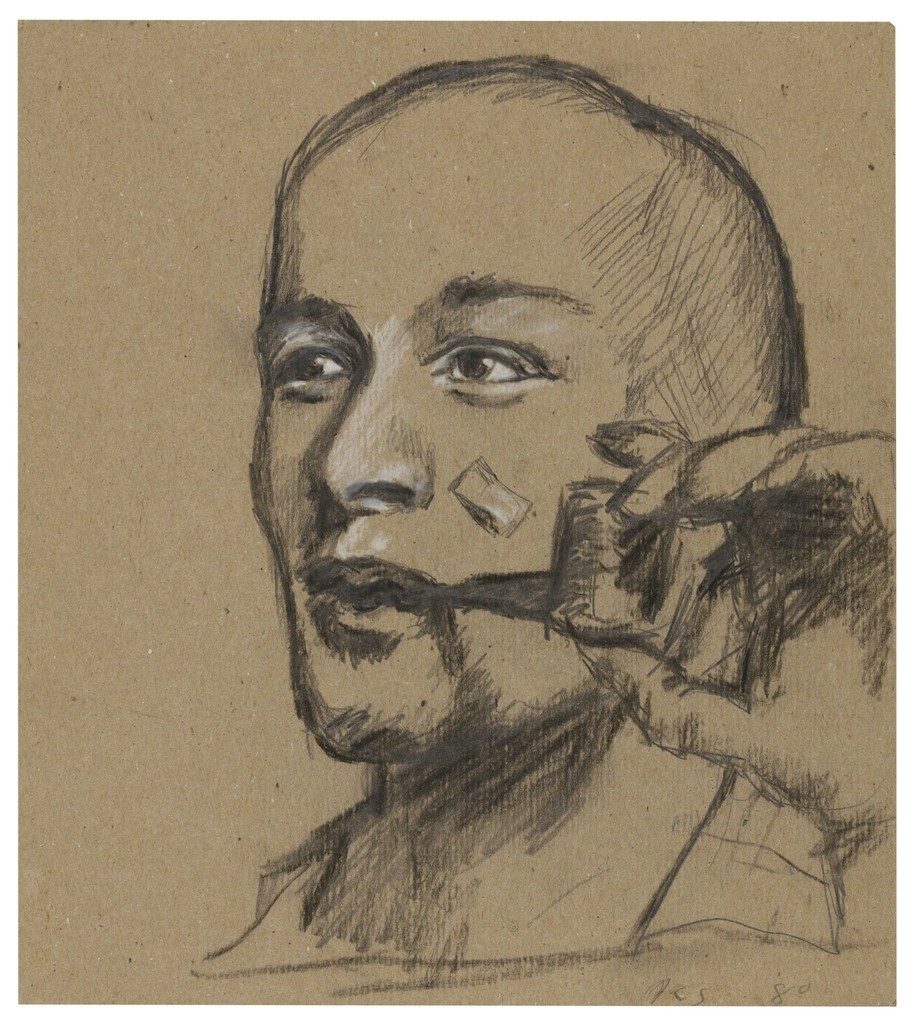
Julian Schnabel’s Blinky Palermo (1980). Image courtesy of Sotheby’s.
Who says it’s difficult to get a steal at auction? One bargain-hunting buyer snatched up this Julian Schnabel graphite sketch of the late artist Blinky Palermo from 1980 for well below estimate at Sotheby’s contemporary art day sale. The work carried an estimate of $20,000–30,000 and, though it was guaranteed, found a buyer for the low, low price of $6,250. Consider it a case study for insisting on a reserve price.
 King of the Day Sale: Sotheby’s
King of the Day Sale: Sotheby’sChristie’s may have crushed Sotheby’s during its evening sales—besting its rival in both the postwar and contemporary and Impressionist and Modern categories—but Sotheby’s continued its winning streak during the daylight hours. The publicly traded auction house has had the highest total for its day sales in three of the past five years. This year, it made $103 million, $1.3 million less than Christie’s. Over the past five fall day sales, Sotheby’s has made an average of $93.2 million, compared to Christie’s $91.4 million and Phillips’ $12.8 million.
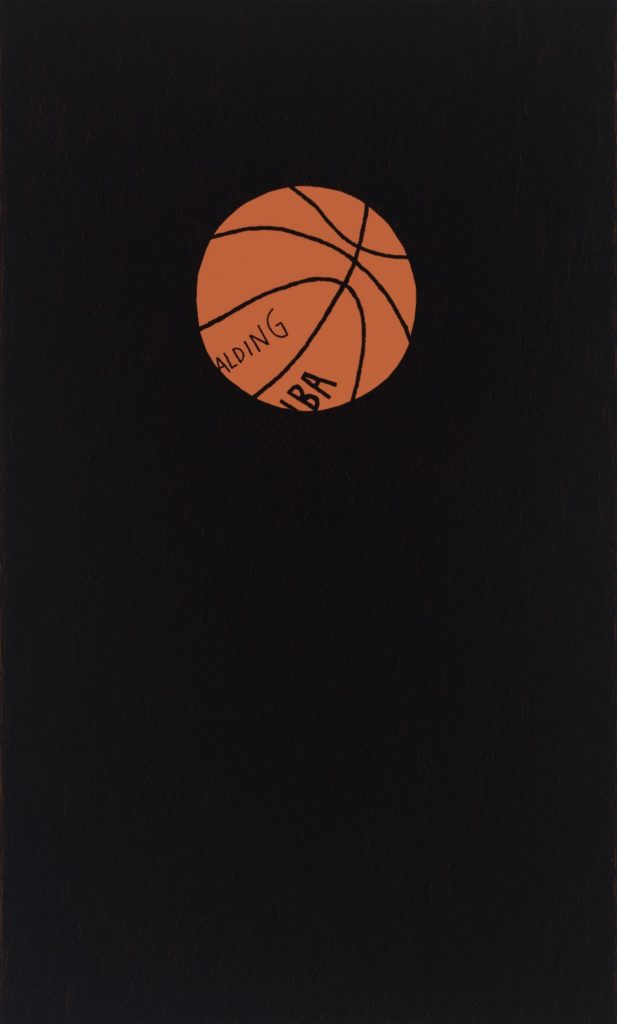
Jonas Wood’s Bball 13 (2016). Photo: De Pury.
So much for buying for keeps. Purchased at the amFAR Gala charity auction in Cannes on May 25, where the starting bid was $90,000, this Jonas Wood basketball painting found its way into Christie’s day sale just 175 days later. It sold for $137,500.

Yayoi Kusama’s Pumpkin (S) (2016). Photo courtesy Christie’s Images.
Normally, it takes time for a work of art to make the journey from the studio to the auction block. But several works of art sold last week left the artist’s hands only one year earlier. A Yayoi Kusama Pumpkin from 2016 fetched $1.1 million at Christie’s. The newness didn’t seem to dissuade the buyer, who paid more than $300,000 over the high estimate. Christie’s also sold a 2016 Philippe Parreno and a 2016 Jonas Wood last week, while an Ugo Rondinone from the same year found a buyer at Phillips for $30,000, well over its high estimate of $12,000.
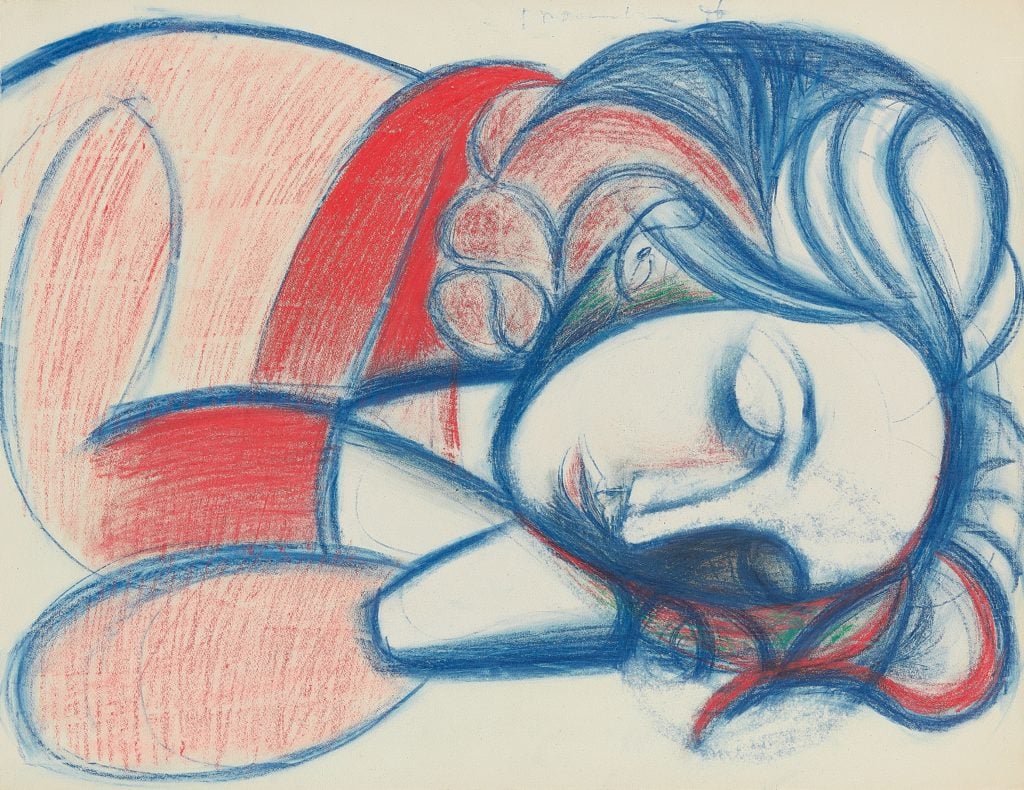
Pablo Picasso’s Portrait de femme endormie III (1946). Photo courtesy of Phillips.
Pablo Picasso took the prize for generating the most money last week behind Leonardo, tallying $142.6 million for 36 lots sold. Next in line was Andy Warhol, who racked up $111.8 million (with 25 lots), followed by Claude Monet with $87.4 million (for eight lots). Cy Twombly brought in $85.4 million (with six works) and Van Gogh generated $84.4 million (for just two pieces).
For perspective, note that the buyer of the Leonardo could have spent the same amount of money on every single Picasso, Warhol, Monet, and Twombly on offer last week—combined.
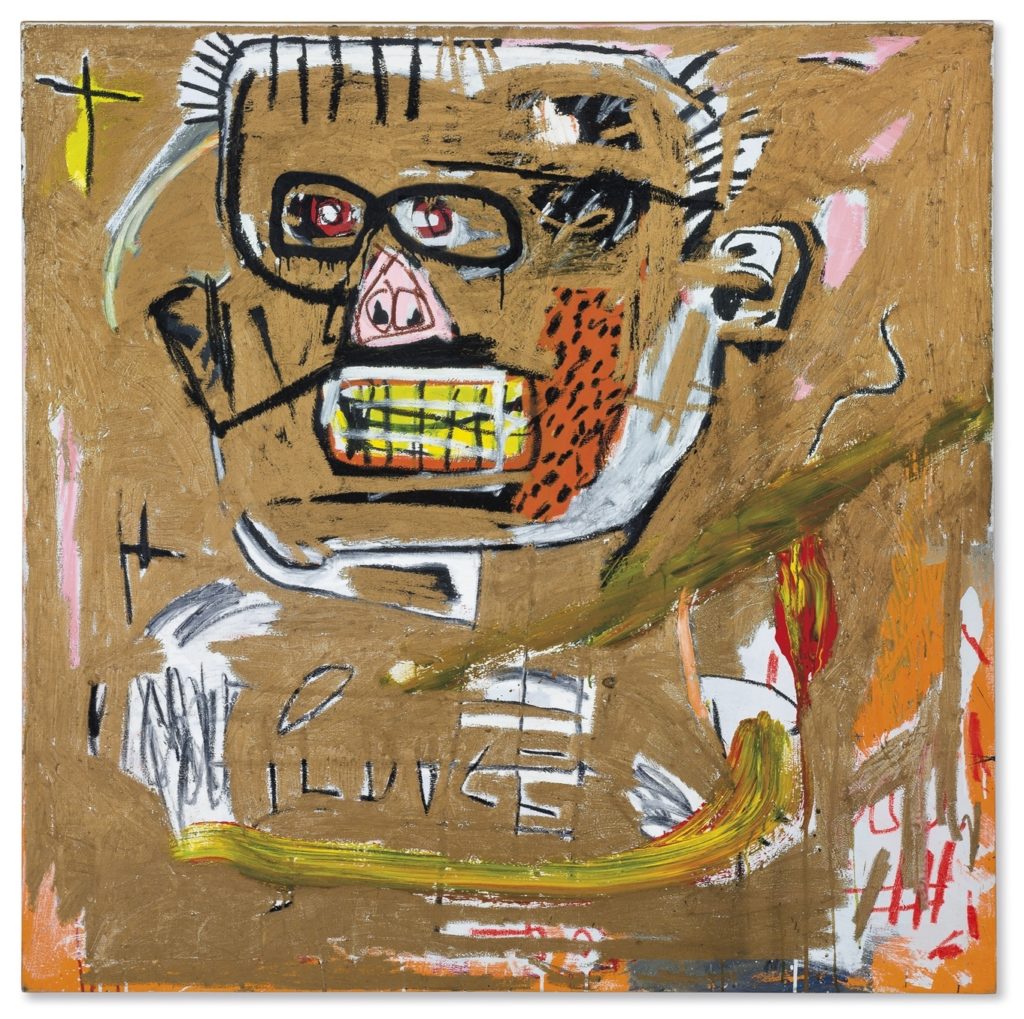
Jean-Michel Basquiat’s II Duce (1982). Image courtesy of Christie’s Images Ltd.
Nevertheless, while the bluest of blue-chip did well, other contemporary names fell victim to overheated markets and overly aggressive estimates. Some of the most high-profile works that failed to sell last week included a John Currin painting with a low estimate of $6 million, a 1982 Jean-Michel Basquiat with a low estimate of $25 million, and a Christopher Wool with a low estimate of $1.2 million, all on offer at Christie’s. To be fair, however, some of them may have fallen prey to post-Leonardo excitement and distraction.
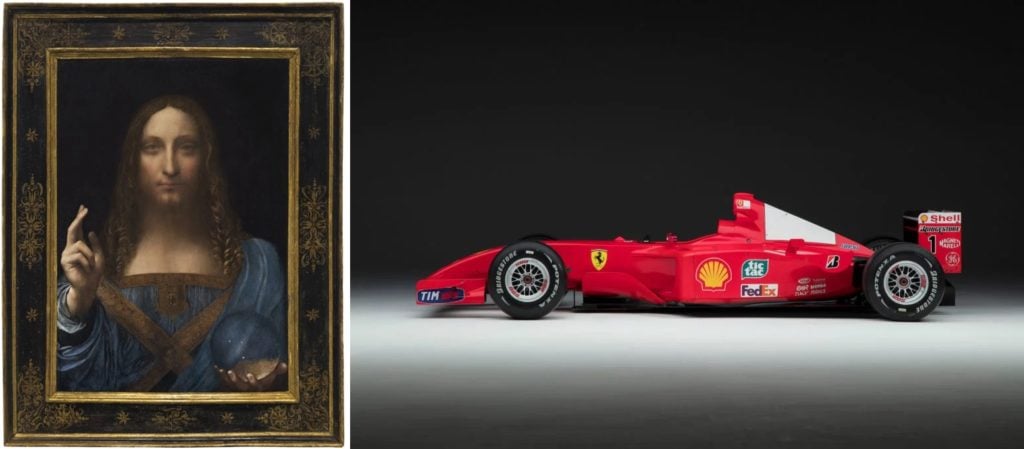
Leonardo da Vinci’s Salvator Mundi and the 2001 Ferrari sold at Sotheby’s.
We all know postwar and contemporary is the most profitable category in the auction business—and this season, specialists proved just how far they would go to get in on the action. Christie’s notoriously included Leonardo da Vinci’s 500-year-old Salvator Mundi in its evening postwar and contemporary sale, while Sotheby’s threw in a 2001 Ferrari (yes, an actual car) alongside Bacon and Warhol. (Sotheby’s, perhaps admirably, did not even try to offer an art-historical justification for the move. Grégoire Billault, the head of the sale, told the FT: “To call it a work of art is maybe pushing it and it isn’t to everyone’s liking, but it is contemporary and beautiful and chimes with our generation.”)
Phillips also pushed the boundaries of its contemporary evening sale—though to a much less radical extent—by including a Picasso work on paper, Portrait de femme endormie III (1946). Buyers didn’t seem to mind: It sold for $9.3 million, nearly nine times its high estimate.
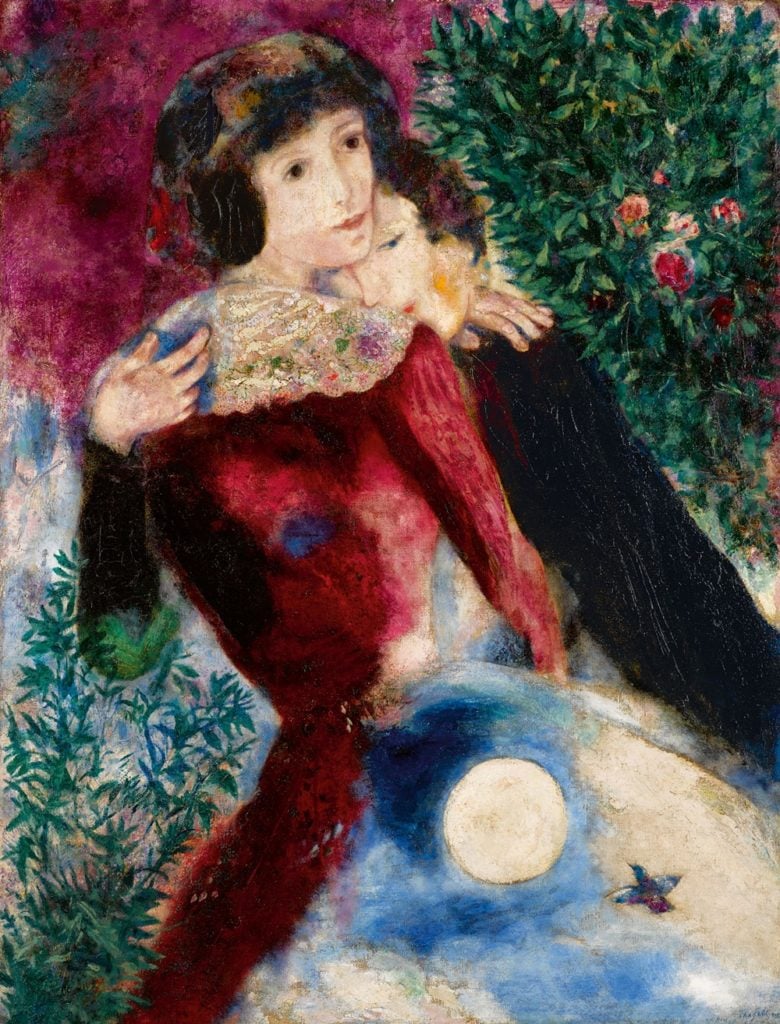
Marc Chagall’s Les Amoureux (1928). Image courtesy Sotheby’s. © 2017 Artists Rights Society (ARS), New York / ADAGP, Paris
The Impressionist and Modern market—“which has been considered dying or dead,” in the words of Allan Schwartzman, the co-founder of Art Agency Partners—“was extraordinarily alive and healthy.” The challenge for the sector is not the market or taste, Schwartzman says, but “access to great material.” Both houses lodged their best totals for the category in recent seasons. Sotheby’s pulled in $311 million, compared with $213 million this past spring and $196 million in fall 2016. Meanwhile, Christie’s touted its $531 million total as the best in a decade, and it easily eclipsed the $318.6 million total this past spring and $279 million last fall.
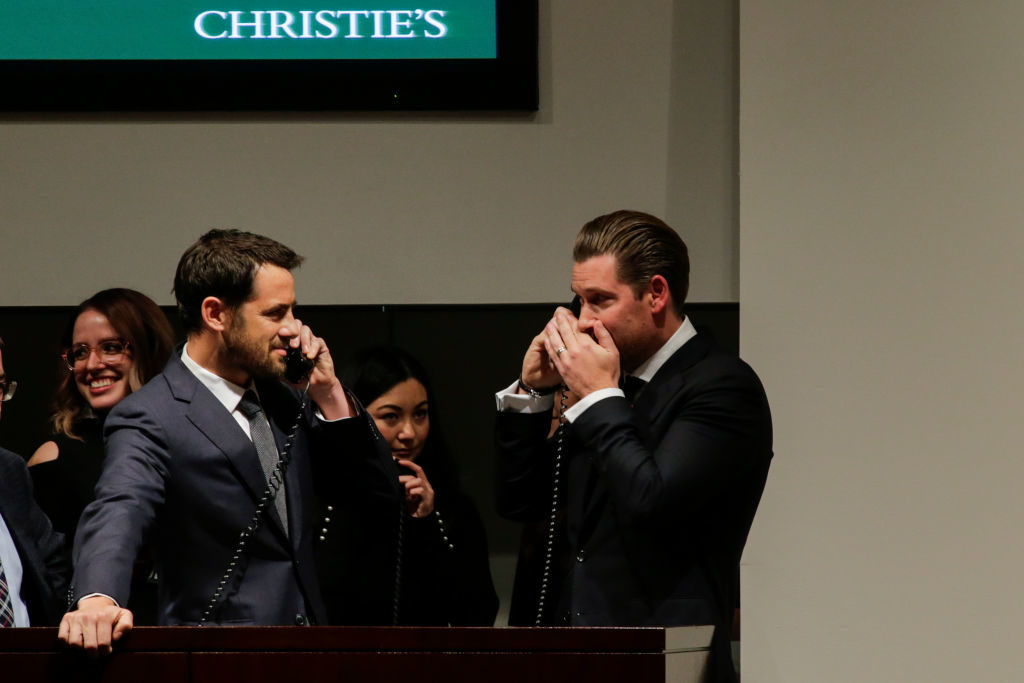
Alex Rotter and Loic Gouzer conferring at the height of the phone-bidding during the evening sale at Christie’s. Eduardo Munoz Alvarez/Getty Images.
Even in eight-figure nosebleed territory, bids at auction tend to climb in increments of $500,000 or $1 million on average. (Hey, you don’t get rich by spending money willy-nilly.) Jaws were already starting to drop during the 19-minute contest for Leonardo da Vinci’s Salvator Mundi when the bidding started jumping in $10 million increments. Then, Alex Rotter stunned the room when he jumped from $370 million to $400 million on behalf of his client, knocking out the competition and securing the work for the highest price in auction history with arguably the largest increment ever lodged in a public auction.